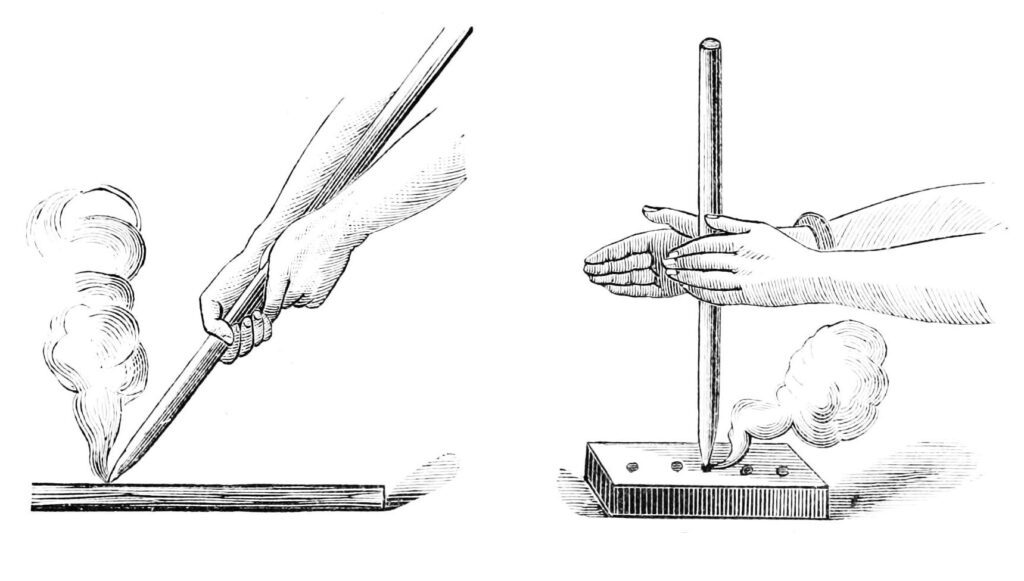Fire. It’s one of humanity’s oldest discoveries, a cornerstone of survival, and a symbol of our innovation and resilience. Yet, in our modern, convenience-driven lives, where lighters and matches are mere afterthoughts, the ancient skill of making fire naturally often feels like a lost art.
But what happens when you find yourself in the great outdoors without those trusty tools? Whether you’re a wilderness enthusiast, a prepper, or just someone who wants to impress friends at a campfire, learning how to create fire with natural materials is not just a practical skill but a journey of patience, technique, and connection to our primal roots.
 Pin
Pin Image source Instagram: @mattgraham_earthskills
In this comprehensive guide, we’ll explore everything you need to know about making fire naturally—delving into tools, methods, techniques, and the all-important mindset needed to succeed. Let’s ignite that spark (pun intended) and dive in!
Table of Contents
The Importance of Knowing How to Make Fire
Before we start rubbing sticks together, let’s discuss why this skill is still relevant in today’s high-tech world:
- Survival Situations: Whether stranded on a hike or caught in an emergency, fire can mean warmth, cooked food, clean water, and protection from predators.
- Self-Reliance: There’s immense satisfaction in knowing you can provide for yourself using only what nature offers.
- A Deeper Connection to Nature: Making fire isn’t just about survival—it’s a meditative and humbling experience that connects us to our ancestors.
- Impressive Skill: Who wouldn’t want to be the person at a camping trip who starts a fire without a lighter, earning the awe and envy of friends?
Understanding the Fire Triangle
Before you start, you must understand the three elements every fire needs to thrive:
1. Heat: The spark or ember that sets the process in motion.
2. Fuel: Wood, tinder, or other flammable material to sustain the fire.
3. Oxygen: A steady supply of air to feed the flames.
Remove any one of these components, and your fire will die faster than a wet campfire joke.
Tools and Materials for Natural Fire-Making
1. Tinder: The Spark-Catcher
Tinder is the foundation of your fire, responsible for catching the initial spark or ember and igniting. Ideal tinder materials are fine, dry, and lightweight.
Examples of Natural Tinder
- Dry Grass: Found in meadows or along trails.
- Birch Bark: Even when damp, birch bark contains oils that burn well.
- Cattail Fluff: Lightweight and highly flammable.
- Pine Needles or Resin: Sap and needles from pine trees are excellent fire starters.
- Improvised Tinder: If nature fails you, pocket lint, cotton balls, or even small pieces of paper can work wonders.
2. Kindling: The Flame Builder
Once your tinder ignites, kindling bridges the gap between the tiny flame and larger fuel logs. Collect small, dry sticks, twigs, and bark.
3. Fuel: The Sustainer
Fuel includes larger logs and pieces of wood that keep the fire going. Ensure the wood is dry—wet or green wood will smolder without producing strong flames.
The Methods: How to Start Fire with Natural Materials
1. Fire by Friction
The most primitive yet iconic way to create fire, friction-based methods generate heat through the rapid rubbing of wood against wood. This heat eventually produces an ember, which is used to ignite tinder.
 Pin
Pin Image source: Wikimedia Commons
Method 1: Bow Drill
The bow drill is the poster child of friction-based fire-starting techniques. It’s reliable but requires preparation and practice.
What You’ll Need:
- Bow: A sturdy, curved stick with a cord (shoelace, vine, or rawhide) strung tightly.
- Spindle: A straight, smooth stick about 8–12 inches long.
- Fireboard: A flat piece of wood with a small notch to catch the ember.
- Socket: A stone, bone, or hard piece of wood to hold the spindle in place.
Steps to Success:
- Prepare Your Fireboard: Cut a V-shaped notch and make a small depression near its edge.
- Assemble the Bow Drill: Wrap the bowstring once around the spindle.
- Start Drilling: Hold the spindle upright in the fireboard’s depression and apply downward pressure with the socket. Use the bow to rotate the spindle back and forth rapidly.
- Look for Smoke: After sustained effort, you’ll see smoke and form a small, glowing ember in the notch.
- Transfer to Tinder: Carefully transfer the ember to your tinder nest and blow gently to ignite.
Pro Tips:
Use softwoods like cedar or willow for the spindle and fireboard.
Don’t rush—the process requires rhythm and control.
 Pin
Pin Image source: Wikimedia Commons
Method 2: Hand Drill
Simpler than the bow drill but much harder on the hands, the hand drill uses a similar principle but without the aid of a bow.
Steps:
- Roll the spindle between your palms, pressing it into the fireboard.
- Use fast, consistent movements to generate heat and create an ember.
Challenge: This method demands stamina and calloused hands. Beginners might struggle but don’t give up—blisters heal, pride lasts forever.
 Pin
Pin Image source: Wikimedia Commons
2. Fire with Flint and Steel
A classic technique involving striking a steel object against a flint rock to produce sparks.
What You’ll Need:
- Flint or quartzite.
- A steel striker or the back of a high-carbon steel knife.
- Tinder, preferably char cloth or dry plant material.
Steps to Success:
- Hold the flint and striker at an angle.
- Strike the steel against the flint to produce sparks.
- Direct the sparks onto your tinder.
- Once the tinder catches, gently blow on it to create flames.
Why It’s Awesome: This method is relatively easy with practice and works even in damp conditions if your tinder is dry.
 Pin
Pin Image source: Wikimedia Commons
3. Solar Fire
Harnessing the power of the sun is a highly efficient way to make fire, provided the weather cooperates.
What You’ll Need:
- A magnifying glass, binocular lens, or even a clear plastic bag filled with water.
- Dry tinder.
Steps to Success:
- Focus sunlight through the lens onto a concentrated point on your tinder.
- Hold steady until the tinder begins to smoke.
- Gently blow on the ember to ignite.
Limitations: Solar fire only works on sunny days and requires patience to achieve the perfect angle.
 Pin
Pin Images source: Wikimedia Commons
4. Fire with Natural Rocks (Quartzite and Iron Pyrite)
If you’re stranded without steel or flint, natural stones like quartzite and pyrite can produce sparks when struck together.
Steps:
- Strike one rock against the other forcefully.
- Aim the sparks onto a tinder bundle.
- Cultivate the ember and blow it into flame.
Building the Fire: Techniques for Success
Now that you’ve created a flame, it’s time to build and maintain a proper fire.
Step 1: Prepare Your Fire Site
Clear the ground of flammable debris.
Create a fire ring using stones to contain the flames.
Step 2: Arrange Your Materials
Start with your tinder in the center, surrounded by kindling. Use the teepee or log cabin structure to promote airflow.
Step 3: Add Fuel Gradually
Once the kindling catches, add larger logs. Avoid overloading the fire, as it can suffocate the flames.
Fire Safety Tips
Making fire comes with responsibility. Follow these safety guidelines to protect yourself and the environment:
- Choose Your Location Wisely: Avoid building fires near dry grass, overhanging branches, or windy areas.
- Extinguish Thoroughly: Douse your fire with water and stir the ashes to ensure no embers remain.
- Monitor the Fire: Never leave a fire unattended.
Common Pitfalls and How to Avoid Them
Problem 1: Wet Materials
Solution: Always collect dry tinder and wood. If it’s damp, use your body heat to dry small pieces.
Problem 2: Poor Preparation
Solution: Gather all materials before you start. Having everything ready will save time and frustration.
Problem 3: Impatience
Solution: Remember, fire-making is a skill that requires patience. Take your time to master the techniques.
Mastering the art of making fire with natural materials isn’t just a practical survival skill; it’s a journey that connects you to nature and your ancestors. Whether you’re using friction, striking stones, or harnessing the power of the sun, each successful flame brings a sense of accomplishment few modern conveniences can match.
So next time you’re in the wilderness—or even your backyard—take a moment to practice these





























